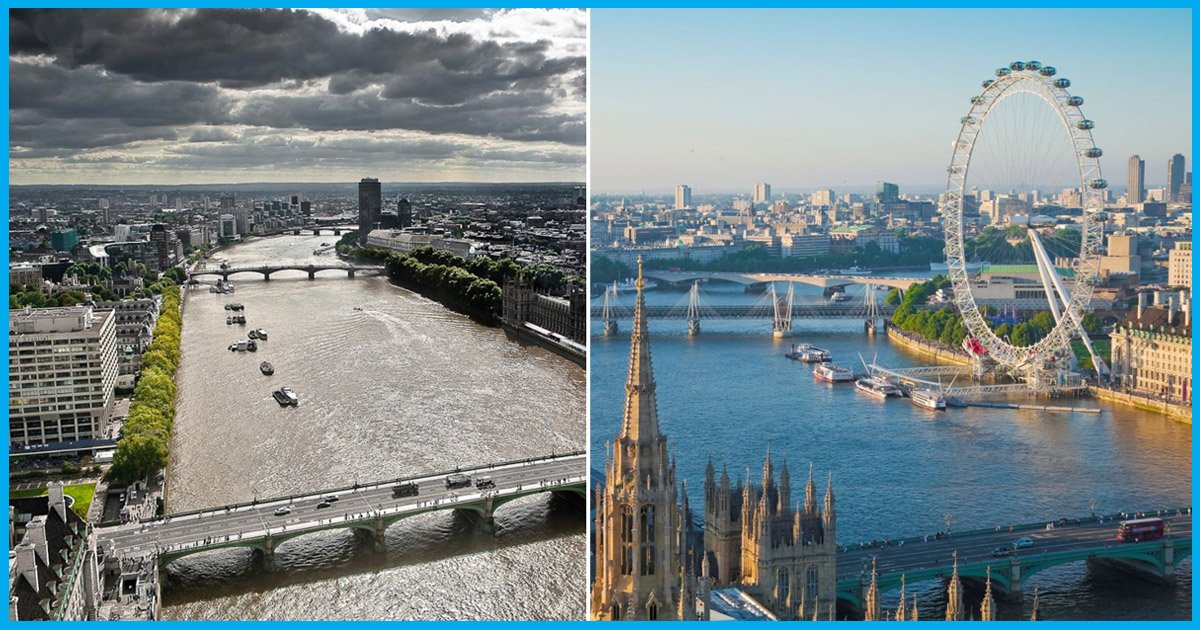
London's River Thames: From Filthy, Foul-Smelling Drain To One Of The World's Cleanest Rivers
17 May 2017 9:17 AM GMT
Back in the days, River Thames in England flourished with thousands of habitats, flowing from the heart of London. The river was like a jewel in the crown of London. But the river started to die due to pollution, sewage, Industrial waste and by 1957 it was declared “biologically dead” by the Natural History Museum. Newspapers described the Thames as a filthy, foul-smelling drain.
It seemed there was no way for it to survive – but it bounced back, defying death. After 60 years of being declared dead, the Thames came back as one of the cleanest rivers in the world. Today, life is thriving below and above its waters. This transformation won the International Thiess River Prize, a £220,000 award, in 2010 for its outstanding restoration process.
The great stink
The 200-mile river was the destiny of London’s waste. It was then the dustbin of London. During the Victorian era, industrial waste, untreated sewage, slaughterhouses’ wastes – everything got routed into the Thames and, as a result, the river started to get polluted swiftly. World War II bombings over sewage treatment plant forced more sewage to spill the Thames. This pushed the Thames from bad to worse, but it was not until the 1857 Great Heat that people noticed the awful smell of the Thames. Due to pollution, the amount of oxygen in the water fell so low that no life could survive and, in effect, fish either died or swam away. The Jewel of London got branded as the “Great Stink”. With no oxygen and continued spillage of untreated pollutants, the Thames started to stink and die. It was eventually declared dead in 1957 by the Natural History Museum.
In fact, things were so dire that if you fell into the River Thames in the 1950s, you would have to be rushed to a hospital to have your stomach pumped as the river was full of untreated sewage.
Outbreak of Cholera
The Thames was the people’s main source of drinking water but as it got polluted, cholera broke out in 1832 and remained for 22 years, claiming 35,000 lives. In the beginning, nobody was ready to believe that the deaths were happening because of water. Instead, they blamed “miasma” or the bad smell in the atmosphere. Cholera was controlled only once the restoration process got initiated.
The clean-up process
The Awful Stinking Thames, “the Great Stink”, had finally reached the Houses of Parliament during the Heat Wave of 1857. This, along with the outbreak of cholera, forced the lawmakers to pass a law for cleaning the Thames. And it was not until 1865 that a plan was agreed.
Engineer Joseph Bazalgette masterminded the plan to divert sewage directly into the outfalls at Beckton and Crossness, leaving the Thames in central London sewage-free. This improved lot of central London, but the water downstream became even fouler. Introducing sewage treatment 20 years later fixed the water downstream but increasing industrialisation and London’s growing population in the early part of the 20th century continued to put a strain on the Thames. Diverting sewage fixed the smell, but the river became dead. Another mission to clean the Thames was undertaken in 1960. This further improved sewage treatment, industrial discharges were removed, oxygen levels increased, and biodegradable detergents came into use.
Life is back in the river
Sixty years ago, nothing could survive in the Thames and it was declared biologically dead. But today, it is home to seals, salmons, porpoises, and even the occasional stray whales and dolphins. After its clean-up, the Thames now supports a huge diversity of fish. The “Great Stink” has become a different place altogether. The Thames is now home to 125 species of fish and more than 400 species of invertebrates living in the mud. Life is thriving in the water and above the water. Waterfowl, waders, and sea birds feeding on the rich pickings from water – all of them now inhabit the environment around the Thames.
Keeping it clean
The Thames came back from dead and is thriving but it is reported that up to three hundred tonnes of rubbish are getting recovered from the Thames every year. The amount of plastics, especially plastic bottles, is growing with each passing year.
Keeping the Thames clean is becoming a challenge. Recently, Royal Holloway, University of London, found that up to 75% of some types of fish have plastic fibres in their gut. This gives the indication that all is not well and there is still lot need to be done to keep the Thames clean. A campaign began in 2015 by explorer Paul Rose asking Londoners to do the right thing and make sure their rubbish goes in the bin and not into the Thames. This campaign is all about stopping the wave of rubbish into the Thames.
What we can learn from this epic clean-up process
There are many takeaways for our rivers from this epic cleaning and life-restoration process. Could it be that our mighty rivers in India are in need of restoration and rejuvenating? Yes. We need to stop untreated water and industrial wastes from spilling directly into our rivers. Continuos measures should be taken to stop plastic and other rubbish from getting into our rivers.
 All section
All section













